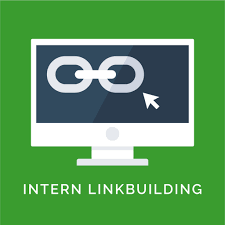intern linkbuilding When it comes to search engine optimization (SEO), external links or backlinks often steal the spotlight. However, internal link building plays an equally important role in improving your website’s rankings and user experience. While backlinks help search engines determine your site’s authority, internal links assist search engines in understanding the structure of your site, distributing link equity, and guiding users to important content. In this article, we’ll take a deep dive into the world of internal link building, why it matters, and how you can create a robust internal linking strategy.
What is Iintern linkbuilding?
Internal link building refers to the practice of linking one page on your website to another page within the same domain. These links help both users and search engines navigate your site more efficiently. By providing easy access to related content, internal links can enhance user experience, reduce bounce rates, and guide visitors toward conversion-focused pages.
For search engines like Google, internal links play a crucial role in crawling and indexing your site. They signal the hierarchy of your website, show the relationships between pages, and distribute link equity (also known as “link juice”) from high-authority pages to other areas of your site.
Why Internal Links Matter for SEO
Internal linking is one of the most underrated yet highly effective SEO tactics. Here’s why internal links are essential:
1. Improved Crawlability and Indexing
Search engines use crawlers, also known as spiders or bots, to navigate and index web pages. When a page has more internal links pointing to it, crawlers can easily find and index it. Without proper internal linking, some pages may remain “orphaned,” meaning they exist on your site but are hard for both search engines and users to find.
2. Distributing Link Equity
Internal links allow you to distribute the link equity from high-authority pages across your site. This helps boost the SEO value of other important pages that may not have as many external links but are crucial for conversions, such as product or service pages.
3. Enhanced User Experience
Internal links improve user experience by guiding visitors to related content, making it easier for them to navigate your site and find the information they need. Well-structured internal linking encourages visitors to spend more time on your site, reducing bounce rates and increasing the chances of conversions.
4. Keyword Optimization
Internal links allow you to strategically use anchor text to target specific keywords. By using relevant, keyword-rich anchor text, you can send strong signals to search engines about the topic and relevance of the linked pages, improving their chances of ranking for those keywords.
How to Build an Effective intern linkbuilding Structure
Now that you understand why internal link building is important, let’s explore how to create an effective internal linking strategy. Here are some actionable steps:
1. Create High-Quality Content
The foundation of any internal linking strategy is high-quality content. Without valuable, informative content to link to, your internal linking efforts won’t be effective. Make sure your website has a variety of relevant, useful pages such as blog posts, landing pages, product descriptions, and more.
By regularly publishing high-quality content, you’ll create opportunities for internal linking. For example, if you publish a blog post about a specific topic, you can link it to related content, encouraging users to explore your website further.
2. Use a Logical Site Structure
A well-organized site structure is critical for internal link building. Your website should have a clear hierarchy, with important pages such as home, category, and product pages near the top, followed by less important pages like individual blog posts or FAQs.
Having a logical structure helps users and search engines understand the relationships between different pages. It also ensures that important pages are easily accessible from anywhere on the site.
3. Focus on Contextual Links
Contextual intern linkbuilding are links placed within the body of a page’s content, as opposed to sidebars or footers. These links are more valuable because they are surrounded by relevant text and naturally fit into the context of the page. Search engines value these links more highly since they provide users with a logical reason to visit the linked content.
Whenever you write a blog post or product description, look for opportunities to include contextual links to other relevant pages on your site. For example, if you’re writing a post about SEO tips, you can link to a previous post on keyword research.
4. Prioritize Key Pages
Not all pages on your site have equal importance. Some pages, such as your homepage, product pages, or cornerstone content, are more valuable than others. These key pages should receive the most internal links, as this will signal to search engines that they are important.
To prioritize key pages, regularly review your site’s analytics to identify which pages are performing well and driving conversions. Focus on directing internal links to these high-priority pages.
5. Use Descriptive and Keyword-Rich Anchor Text
Anchor text is the clickable text in a hyperlink. It provides context to both users and search engines about the content of the linked page. By using descriptive and keyword-rich anchor text, you can help search engines understand the relevance of the linked page and improve its chances of ranking for targeted keywords.
Avoid generic anchor text like “click here” or “read more.” Instead, use specific, keyword-focused anchor text that accurately describes the content of the linked page. For example, if you’re linking to a page about SEO services, use anchor text like “SEO services for small businesses.”
6. Avoid Over-Optimizing Anchor Text
While using keywords in your anchor text is important, over-optimizing can have negative consequences. Search engines may view excessive use of exact-match keywords as spammy or manipulative, potentially resulting in a penalty.
To avoid this, mix up your anchor text by using variations of your target keywords and natural language. This will create a more diverse and user-friendly internal link profile.
7. Include Links to Deep Pages
Many websites focus their internal linking efforts on top-level pages, such as the homepage or product categories. However, it’s equally important to link to deeper pages within your site, such as individual blog posts or long-tail content.
These deep pages may not receive as much external link equity, so internal links can give them the boost they need. By linking to deep pages, you improve their visibility and help search engines discover and index them.
8. Keep Your Links User-Centric
While intern linkbuilding is an SEO tactic, it’s essential to keep user experience in mind. Don’t add links for the sake of SEO; instead, ensure that each internal link serves a purpose for your users. The goal is to make navigation easier and guide visitors to content that adds value.
Before adding an internal link, ask yourself: Does this link help the user find related information or take the next logical step in their journey?
Common intern linkbuilding Mistakes to Avoid
intern linkbuilding can be highly effective, but there are a few common mistakes you should avoid:
- Too Many Links on One Page: Overloading a page with too many internal links can confuse users and dilute the SEO value of each link. Keep the number of links reasonable and only link to relevant, important pages.
- Orphan Pages: Pages with no internal links pointing to them are called “orphan pages.” These pages are difficult for search engines to find and index. Make sure every page on your site has at least one internal link pointing to it.
- Broken Links: Internal links that lead to 404 errors can frustrate users and negatively impact your SEO. Regularly audit your internal links to ensure they are functioning properly.
Conclusion
intern linkbuilding is a powerful yet often overlooked SEO strategy that can significantly improve your website’s search rankings, user experience, and conversion rates. By focusing on creating high-quality content, using logical site structures, and strategically linking to key pages with descriptive anchor text, you can optimize your internal link profile for maximum impact.
Remember, internal linking is about more than just SEO—it’s about enhancing the experience for your users and helping them find the content that matters most.
FAQs
- What is intern linkbuilding?
Internal link building is the process of linking one page on your website to another within the same domain to improve navigation, SEO, and user experience.
- Why are internal links important for SEO?
Internal links help search engines crawl and index your site, distribute link equity to important pages, and improve the user experience by guiding visitors to relevant content. - How do I create an effective internal link structure?
Focus on creating high-quality content, using a logical site structure, adding contextual links, and using descriptive anchor text to guide users and search engines effectively. - What is anchor text, and why is it important?
Anchor text is the clickable text in a hyperlink. Using descriptive, keyword-rich anchor text helps search engines understand the relevance of the linked page. - What are orphan pages?
Orphan pages are web pages that have no internal links pointing to them, making them difficult for search engines to discover and index.

